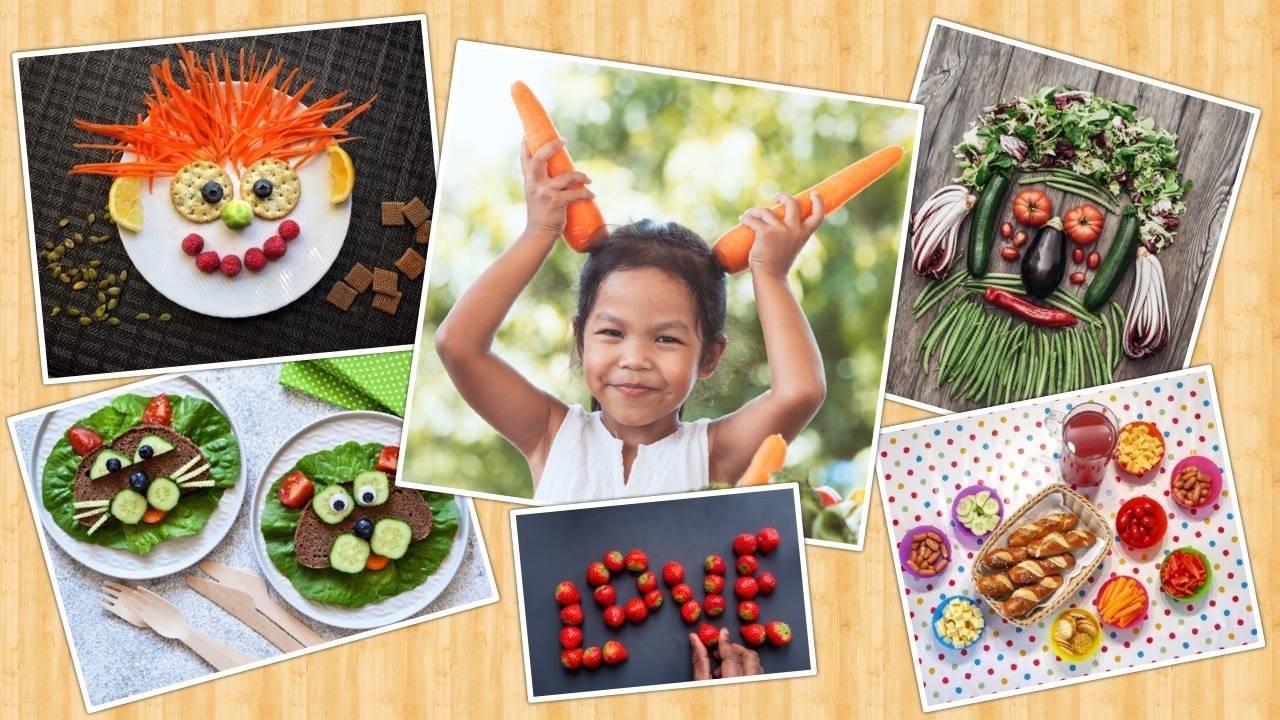
Seriously? Play with your food? Yes! Absolutely! Play with your food!
As a child, my parents used to tell me NOT to play with my food…well, times have changed.
Playing with food is good for kids…especially kids with sensory issues and those that are picky eaters. Kids learn about foods and move toward food acceptance by exploring foods with all of their senses. Eating is a very sensory experience and we take in information from all of our senses during mealtimes. Kids learn through play. We use play-based learning to teach kids their numbers, colours, and letters; however, when it comes to food, we tend to be more serious with messages like, “Don’t play with your food.”
Food play offers an opportunity for kids to explore and learn about foods, without any pressure to “eat” or “try” the foods. Children learn through looking, touching, smelling, and squishing. Over time they become more comfortable interacting with the foods and may eventually start eating them when they are ready.
As an S-LP, I often use food play in my feeding therapy sessions, and it has proven to be a great way to engage kids to learn about new foods. Food play is like arts and crafts, but with plates, sprinkles, and icing instead of paper, glue, and glitter. Sometimes kids choose to eat and taste new foods during food play sessions, but often my little clients are only ready to look, touch, and smell the foods…and that’s ok! Over time and with repeated exposure through food play, kids will learn about foods and move toward eating.
Food Play Set-Up:
- Food play should be conducted away from your child’s typical mealtime environment, so they don’t feel any expectation or pressure to eat the food. You could play with food outside on a sunny day or at a craft table or on a blanket spread on the kitchen floor. This will also help your child to learn that mealtimes are structured for eating and food play time is for sensory exploration and learning.
- Use foods during food play that you would like your child to eventually learn to eat.
- Offer foods in colourful and fun containers. Present foods with different colours, shapes, sizes, and textures.
- Play along with your kids. Make funny faces on plates and take pictures of them afterward. Send the pics to friends and grandparents. Have fun! Try not to focus on your child eating the foods, just relax and let them explore.
- You can model your own enjoyment of the foods and model eating the foods but try not to introduce pressure by over-stating how “yummy” the food is or asking your child to “just try it”. Food play will quickly lose its fun factor if you start to focus on eating versus playing.
- If your child is resistant when you first introduce food play, just say “You don’t have to eat the foods, we are just going to play with the foods.” This always works well for me in feeding therapy sessions and encourages little ones to relax and just play.
- The families I work with sometimes express concerns about wasting food, which is a valid concern. I usually suggest washing and re-using foods later or storing extras in containers for the next food play session.
Food Play Ideas:
- Finger painting with pudding/yogurt/whipped cream
- Use paint brushes to paint with pudding or purees (if your child is not ready to touch)
- Touch and squish wet foods through Ziploc bags
- Teddy bear/doll picnic on the floor with real foods
- Make a “meal” with real foods in your child’s pretend/child-sized kitchen
- Feed puppets and dinosaurs or any toys with a mouth
- Fruit salad/fruit kabobs (sing the Wiggles song: “Fruit Salad”)
- Potato Head with real foods
- Use figurines/action figures to create a food scene or Mario world (e.g., pudding mud pit)
- Count anything! Cheerios, pieces of fruit, crackers…
- Create funny faces with foods on paper plates. Take pictures of them and send to friends.
- Stack crackers, cookies, cubes of cheese, Jello then knock the tower over and laugh
- Match different shaped crackers/foods into categories (e.g., shape, colour, size)
- Sort different shaped foods in a shape-sorter toy
- Drive cars and diggers through cooked pasta/rice, canned fruit, or Jello
- Cook and bake and ask your child to help prepare for meals (your child is head chef for the day)
- Serve food to others (give your child “helping” jobs with food)
- String cheerios or fruit loops and make food jewelry
- Stir/pour/shake/mix foods and sing songs
- Wrap foods in napkins and open them like presents…surprise!
- Make a noise with a food to draw attention to it (e.g., crunch, splat, pop, splash)
- Play Peek-A-Boo with foods
- Make mustaches with foods (e.g., peppers) or glasses (e.g., cucumbers)
- Flick and Roll foods across the table. Play table finger-hockey or soccer with foods
- Write names/letters in purees or sauces
- Make letters/numbers from sticks of foods/cooked noodles
- Use Dixie cups to hide foods, shuffle them, and find them
- Pretend to be a kitty cat or puppy game = licking food from hands or fingers
The most important thing you can do during food play time with your child is relax and have fun. Try not to despair if your child is not eating the foods, just remember he/she is learning through play. Put on some music or sing songs, talk, laugh and enjoy learning about food with your little one.

